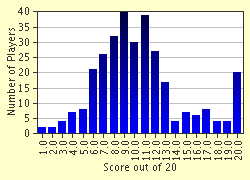Quiz Answer Key and Fun Facts
1. What is the definition of a succulent plant?
2. What is the relationship between a cactus and a succulent?
3. Some of the most unusual succulents have normal seasonal foliage growing out of huge swollen water storage organs. What is the term for the water reservoir of these plants?
4. What method of propagation (starting new plants) is almost exclusive to succulent plants?
5. After taking a section of a succulent plant to start a new one, what is the first thing you should do with the cutting?
6. What is scoria?
7. The cactus family is native to which two continents?
8. Which country has the most native cactus species?
9. In which of the United States is it illegal to field collect cacti without a permit?
10. Organ Pipe Cactus National Monument in Arizona has been badly damaged recently (2002). What is the cause?
11. What is the term for a garden of plants adapted to arid conditions?
12. Which cactus is it illegal to possess in the United States?
13. What do Opuntias (Prickly Pears) have that other cacti don't?
14. Cactus spines are modified leaves. What is their purpose?
15. What is not a use for Opuntias (the Prickly Pear cacti)?
16. Many succulents are named after animals. Which of the following is not a succulent plant?
17. An orchid cactus is a member of the Orchid family.
18. Lithops are tiny plants that are almost completely buried. The two very fleshy leaves have flat tops and are slightly opaque to allow light into the plant. In their natural habitats in South Africa, they are almost impossible to distinguish from rocks. One of their common names is Living Stones. What is another common name for them?
19. The world-wide Euphorbia family has almost as many succulents as the Cactus family. What popular non-succulent Christmas plant is a Euphorbia?
20. Here's an obscure one: Euphorbia abdelkuri has an extremely toxic sap which can cause painful burns. What is it named after?
Source: Author
Ripsmom
This quiz was reviewed by FunTrivia editor
thejazzkickazz before going online.
Any errors found in FunTrivia content are routinely corrected through our feedback system.


